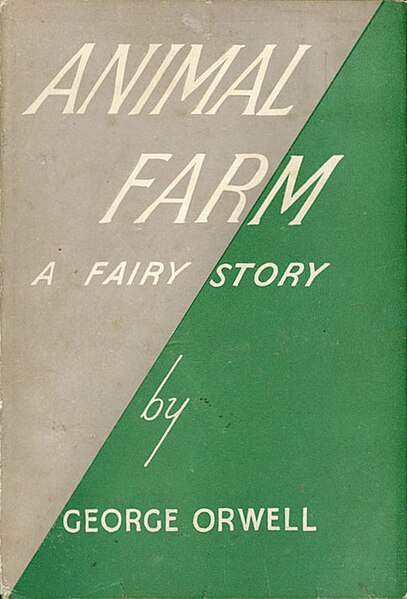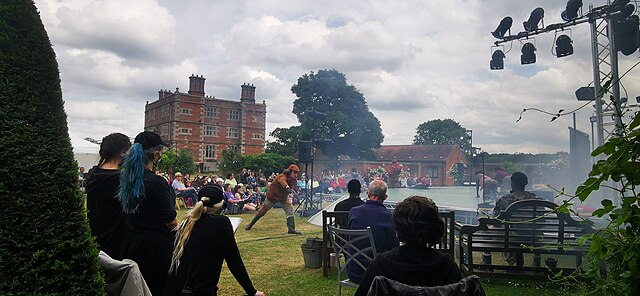Animal Farm is a satirical allegorical novella, in the form of a beast fable, by George Orwell, first published in England on 17 August 1945. It tells the story of a group of anthropomorphic farm animals who rebel against their human farmer, hoping to create a society where the animals can be equal, free, and happy. Ultimately, the rebellion is betrayed and, under the dictatorship of a pig named Napoleon, the farm ends up in a state as bad as it was before.
First edition cover
Squealer sprawls at the foot of the end wall of the big barn where the Seven Commandments were written (ch. viii) – preliminary artwork for a 1950 strip cartoon by Norman Pett and Donald Freeman
Front row (left to right): Rykov, Skrypnyk, and Stalin – 'When Snowball comes to the crucial points in his speeches he is drowned out by the sheep (Ch. V), just as in the party Congress in 1927 [above], at Stalin's instigation 'pleas for the opposition were drowned in the continual, hysterically intolerant uproar from the floor'. (Isaac Deutscher)
A National Youth Theatre performance of Animal Farm at Soulton Hall
As a literary device or artistic form, an allegory is a narrative or visual representation in which a character, place, or event can be interpreted to represent a meaning with moral or political significance. Authors have used allegory throughout history in all forms of art to illustrate or convey complex ideas and concepts in ways that are comprehensible or striking to its viewers, readers, or listeners.
Pearl, miniature from Cotton Nero A.x. The dreamer stands on the other side of the stream from the Pearl-maiden. Pearl is one of the greatest allegories from the High Middle Ages.
Salvator Rosa: Allegory of Fortune, representing Fortuna, the goddess of luck, with the horn of plenty
Allegory of the recognition of the Empire of Brazil and its independence. The painting depicts British diplomat Sir Charles Stuart presenting his letter of credence to Emperor Pedro I of Brazil, who is flanked by his wife Maria Leopoldina, their daughter Maria da Glória (later Queen Maria II of Portugal), and other dignitaries. At right, a winged figure, representing History, carving the "great event" on a stone tablet.
Marco Marcola: Mythological allegory








